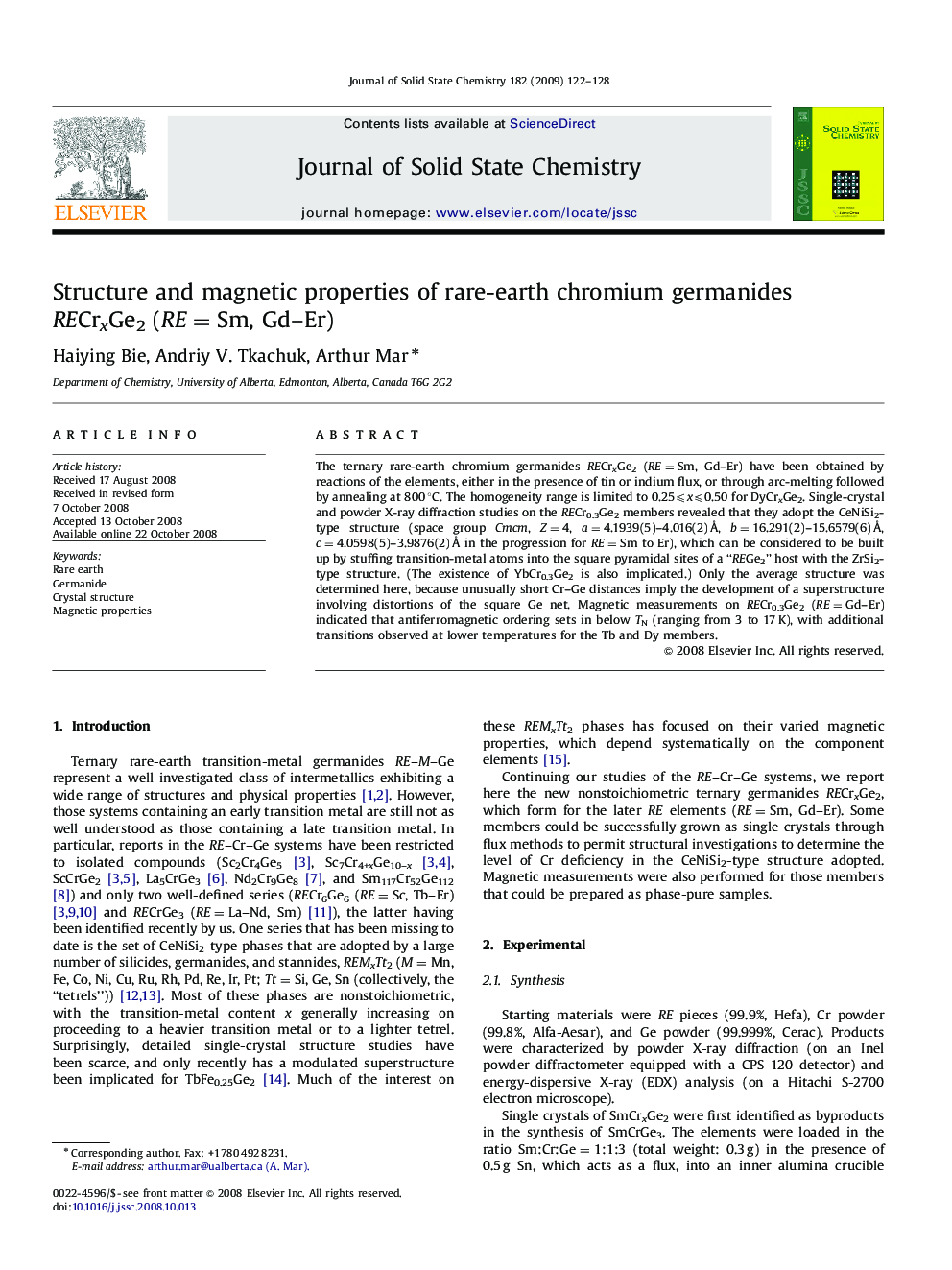| Article ID | Journal | Published Year | Pages | File Type |
|---|---|---|---|---|
| 1331047 | Journal of Solid State Chemistry | 2009 | 7 Pages |
The ternary rare-earth chromium germanides RECrxGe2 (RE=Sm, Gd–Er) have been obtained by reactions of the elements, either in the presence of tin or indium flux, or through arc-melting followed by annealing at 800 °C. The homogeneity range is limited to 0.25⩽x⩽0.50 for DyCrxGe2. Single-crystal and powder X-ray diffraction studies on the RECr0.3Ge2 members revealed that they adopt the CeNiSi2-type structure (space group Cmcm, Z=4, a=4.1939(5)–4.016(2) Å, b=16.291(2)–15.6579(6) Å, c=4.0598(5)–3.9876(2) Å in the progression for RE=Sm to Er), which can be considered to be built up by stuffing transition-metal atoms into the square pyramidal sites of a “REGe2” host with the ZrSi2-type structure. (The existence of YbCr0.3Ge2 is also implicated.) Only the average structure was determined here, because unusually short Cr–Ge distances imply the development of a superstructure involving distortions of the square Ge net. Magnetic measurements on RECr0.3Ge2 (RE=Gd–Er) indicated that antiferromagnetic ordering sets in below TN (ranging from 3 to 17 K), with additional transitions observed at lower temperatures for the Tb and Dy members.
Graphical abstractThe average structure of RECrxGe2 corresponds to the CeNiSi2-type, with Cr atoms entering square pyramidal sites. The Cr atoms provide no contribution to the effective magnetic moment in these compounds, which undergo antiferromagnetic ordering below 20 K.Figure optionsDownload full-size imageDownload as PowerPoint slide
